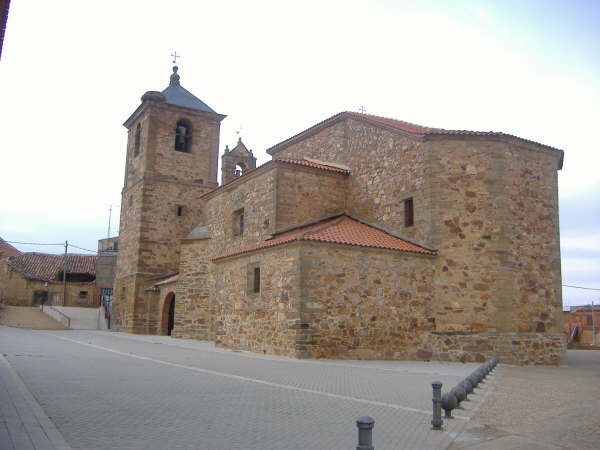Goat throwing on:
[Wikipedia]
[Google]
[Amazon]
 Goat throwing (in Spanish: ''Lanzamiento de cabra desde campanario'' or ''Salto de la cabra'') was a festival celebrated in the town of Manganeses de la Polvorosa, province of Zamora, Spain, on the fourth Sunday of January. The festival coincided with the commemoration of Saint Vincent the Martyr.
Goat throwing (in Spanish: ''Lanzamiento de cabra desde campanario'' or ''Salto de la cabra'') was a festival celebrated in the town of Manganeses de la Polvorosa, province of Zamora, Spain, on the fourth Sunday of January. The festival coincided with the commemoration of Saint Vincent the Martyr.
Background
No one is sure when the tradition of throwing a goat from the belfry of the in the town of Manganeses de la Polvorosa began. It may have been the 19th century, but no one is sure. The festival coincided with the commemoration of Saint Vincent's saint's day. Each year, local residents threw a live goat from the top of the church. Below, a crowd would then catch the falling goat with a canvas sheet. Some goats survived the fall and some did not. If the goat survived it was revered and paraded through the small village, becoming a local legend for years to come. The event was organized by young men, who had just turned 18, and were now eligible for military service. The event is inspired by a legend that states that a priest's goat, whose milk fed the poor with its milk, fell out of the tower, but landed safely. Another story says that the goat made its way up the belfry to eat the food left for the doves, it lost its footing and fell> the goat landed on its hooves and disappeared into the woods.Animal rights
Spain has a number of festivals that involve some sort of animal cruelty, among them are burning the bull, donkey baiting, rape of the beasts (Galicia), garrotting the galgos, quail catapulting, Day of the Geese,running of the bulls
A running of the bulls ( es, encierro, from the verb ''encerrar'', 'to corral, to enclose'; oc, abrivado, literally 'haste, momentum'; ca, correbous, 'run-bulls') is an event that involves running in front of a small group of bulls, typicall ...
, and bull fighting
Bullfighting is a physical contest that involves a bullfighter attempting to subdue, immobilize, or kill a bull, usually according to a set of rules, guidelines, or cultural expectations.
There are several variations, including some forms wh ...
.
Over the years, animal rights
Animal rights is the philosophy according to which many or all Animal consciousness, sentient animals have moral worth that is independent of their Utilitarianism, utility for humans, and that their most basic interests—such as avoiding s ...
groups demanded an end to the practice of throwing the goat. In 1992, the local governor banned the toss. The villagers used roped to lower the goat, but in 1993 they went back to dropping the goat from the church. Once again, the practice was banned in 2000. A toy plush
Plush (from French ) is a textile having a cut nap or pile the same as fustian or velvet. Its softness of feel gave rise to the adjective "plush" to describe something soft or luxurious, which was extended to describe luxury accommodation, or s ...
goat was thrown in the 2014 celebration.
See also
*Animal rights
Animal rights is the philosophy according to which many or all Animal consciousness, sentient animals have moral worth that is independent of their Utilitarianism, utility for humans, and that their most basic interests—such as avoiding s ...
* Cruelty to animals
* Pain in animals
Pain negatively affects the health and welfare of animals. "Pain" is defined by the International Association for the Study of Pain as "an unpleasant sensory and emotional experience associated with actual or potential tissue damage, or descr ...
References
External links
* * {{authority control Animal festival or ritual Animal rights Cruelty to animals Festivals in Spain Goats Province of Zamora Animals in entertainment